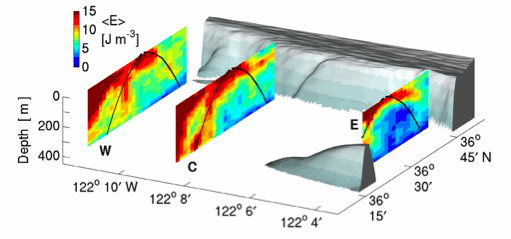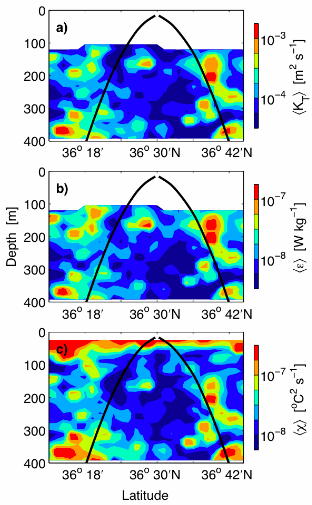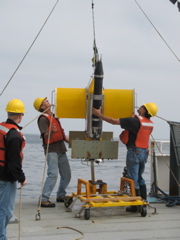ELEVATED MIXING IN AN INTERNAL TIDAL BEAM
The spatial structure of velocity, density, and mixing in an internal tidal beam generated at a submarine ridge near Monterey Bay was observed using a combination of vessel-mounted acoustic Doppler current profilers, a towed conductivity-temperature-depth instrument (SeaSoar), and microconductivity sensors mounted on SeaSoar which sampled as fast as 2048 Hz. Three <60 km meridional sections from the surface to 400–670 m in depth were occupied a total of 56 times during 16 days with the sampling pattern detuned from the M2 tide. Averaging over all observations at a given latitude-depth bin produces a phase average of the M2 internal tide.

Observed velocity and displacement variances are scaled to estimate energy density. A beam in energy density originates from a submarine ridge (figure above- only the upper 400 m is shown but the ridge extends beneath the labels W, C, and E) and reflects with diminished amplitude at the surface. The upward and downward beams show modestly elevated turbulence (figure below), which is patchy along the beam and has mean values about 50% larger than those outside of the beam. Peak values can be almost an order of magnitude larger in the beam.

This research was funded by the Office of Naval Research through the Assessing the Effectiveness of Submesoscale Ocean Parameterizations Departmental Research Initiative.
